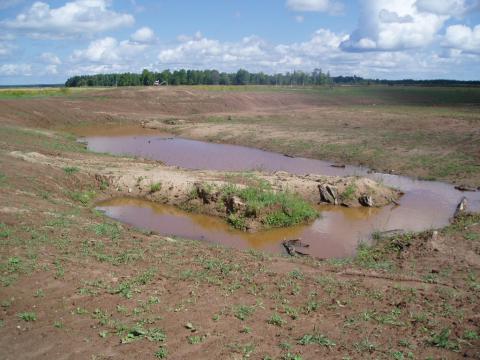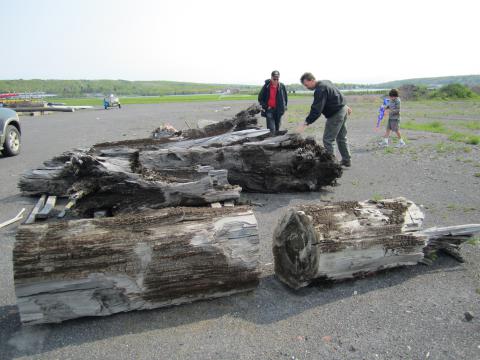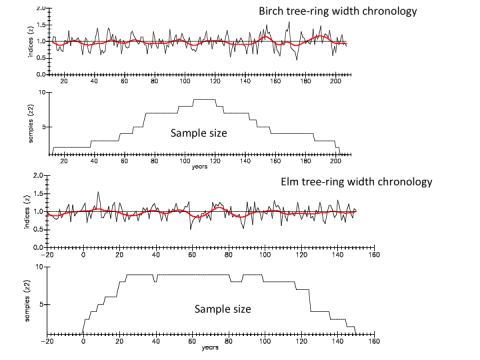• Late Holocene extreme flooding at the Michigan Upper Peninsula (7th century BCE)
In support of a highway project in late 2007, the Michigan Department of Transportation obtained sand by excavating a pond on the farm of Dennis Myllyla near Arnheim, Michigan. Large logs heaped together were encountered at depths of 4-5 m, prompting contact of the School of Forest Resources and Environmental Science, Michigan Technological University (MTU) to see if there was interest in salvaging the wood. A group led by James Schmierer immediately visited the site and collected whole logs, some of which were ca. 8 m long and nearly 60 cm in diameter, and still had bark. Additional sampling took place in 2011 with re-excavation of the “wood jumble” but only a few logs were found. The location of this site is ca. 100 km northwest of sand plains fringing the southern margin of Lake Superior, which have yielded in situ buried stumps of ca. 10,000 14C BP spruce trees at the Gribben Basin locale. The collected wood was identified as hardwoods Ulmus sp. (elm) and Betula sp. (birch) with two logs of Thuja (possibly northern whitecedar). Three tree-ring width records were developed from the recovered wood. The records span 172 years for American Elm, Birch for 196 y and 202 y for white cedar. The Arnheim Swamp site has the majority of samples dated with radiocarbon between 1408±35 to 1582±36 BP (ca. AD 408 to 668), and fortuitously, tree-ring widths of Arnheim white-cedar were overlapped with an exactly dated eastern North America tree-ring chronology extending back over 2780 years from ancient Thuja occidentalis on an island in Lake Huron (courtesy of Ze'ev Gedalof and Brendan Buckley). The overlap is placed from AD 485 to AD 695. The tree rings document a series of extreme floods situated ca. AD 600-700, which could be associated with a major change of regional hydroclimate around the 7th century BCE.




